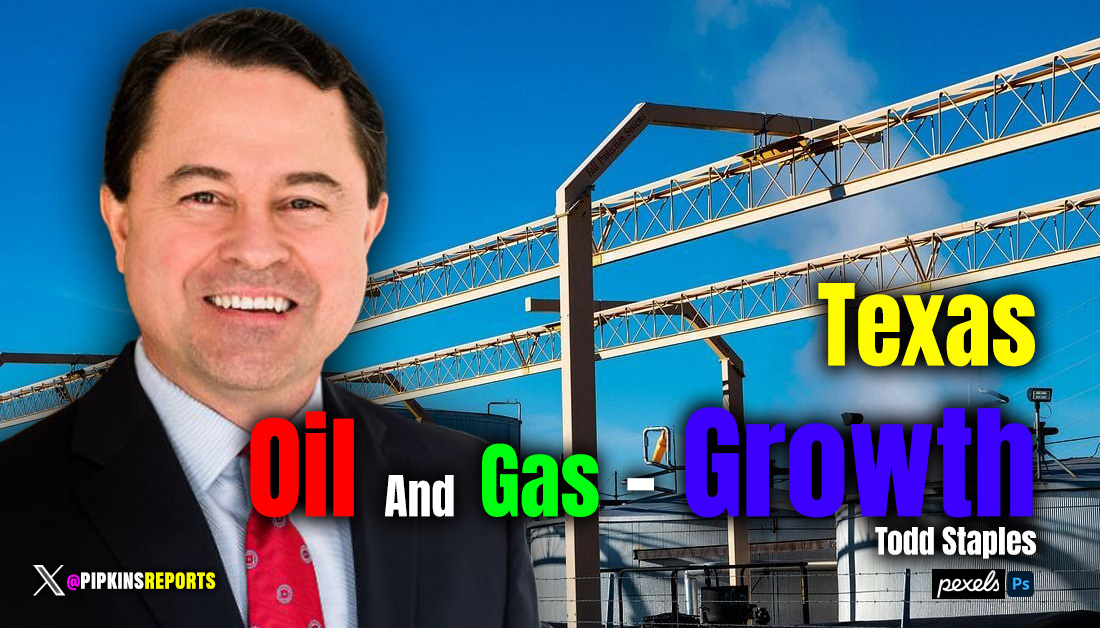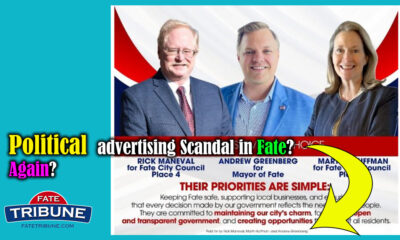Former Councilman calls for a boycott of TCJ for reporting inconvenient truths about candidates
Former Councilman calls for boycott of the Trophy Club Journal.
08/13/2020 – Trophy Club, TX

On Tuesday, former Trophy Club Councilman Rhylan Rowe called for Trophy Club leaders to “unfriend” the editor of the TCJ and “unfollow” his news outlet (ie: boycott the Trophy Club Journal). Rowe’s plea is in response to a personal post made by Michael Pipkins about Rowe’s friend and candidate for Mayor Eric Jensen. Jensen made a blatant attempt of pandering to the African American community after he made grossly racist remarks on his Facebook campaign page. (His posts have since been taken down.)
Mr. Rowe has made similar calls twice in the last few months. Each time in response to the TCJ reporting of accurate but unflattering & often embarrassing information about Rowe or one of his political allies.
In February, the Trophy Club Journal reported that Rowe was glorifying music that is littered with N-Word usage and Cop Killing lyrics. Rowe and his supporters found our reporting as being overly nitpicking and unjust.
But it would appear that the marijuana supporter and Libertarian doesn’t have much influence because each time he has called for a boycott readership in the Trophy Club Journal has grown in response.
Nonetheless, it seems to us to be rather ironic that a person who wants to represent the entire community is asking that same community to boycott one of its own citizens and take down the town’s only investigative news source.
Mr. Rowe quit the Trophy Club Council in 2019. Now he is asking the citizens to elect him again in a race for Place 1 against political rival Greg Lamont.

Featured
Texas School Districts’ VATRE Blitz: A Choreographed Push for Your Wallet, Courtesy of the Insider Crowd

Texas – A School District Near you – Lone Star parents and taxpayers, grab your red pens—it’s election season, and the school district overlords are back with a familiar script. This November 4, 2025, voters across the state will face a barrage of Voter-Approval Tax Ratification Elections (VATREs), those sneaky little ballot measures dressed up as “local funding opportunities.”
But here’s the rub: From the sprawling suburbs of Rockwall to the dusty plains of Abilene, the pitch sounds eerily identical. Same boilerplate language, same sob stories about teacher retention and “safety measures,” same implication that saying no means dooming the kids to cardboard classrooms. Coincidence? Or the handiwork of a well-oiled machine, whispering talking points into the ears of beleaguered superintendents?
Take Rockwall Independent School District, for instance. Their glossy VATRE 2025 webpage hits you with this gem: “A Voter-Approval Tax Ratification Election (VATRE) is a local school funding election that asks voters whether or not they authorize the school district to access the maintenance and operations tax rate to create additional local funding and additional state funding to be used for specific purposes. Unlike a school bond election, a VATRE does not create new debt for the district. Instead, it provides funds for additional local funds that can be used for recruitment and retention, special education and student programs, and safety and security measures.“
Sound folksy? Patriotic, even? Now flip over to Judson ISD in San Antonio, and—bam—it’s a near-verbatim echo: the exact same assurance that this isn’t debt, just “additional local funds” for the usual suspects like special ed and security.
Hawkins ISD up north? Ditto, word for word.
Hurst-Euless-Bedford ISD is chasing $20.6 million to plug a $12 million hole, and their referendum spiel? You guessed it—recruited from the same Rolodex.
This isn’t organic outrage bubbling up from PTA meetings. It’s a symphony, conducted from the shadows of Austin’s lobbying lounges. Enter the Texas Association of School Business Officials (TASBO), the self-appointed sheriffs of school spreadsheets. Founded in 1970 as a “professional association” for the bean-counters and budget mavens running Texas’ 1,200-plus districts, TASBO bills itself as a neutral force for “excellence in school business management.”
In reality? It’s a powerhouse lobby, armed with toolkits, webinars, and conference swag that turns harried CFOs into tax-hike cheerleaders. Their Voter-Approval Tax Rate Election Toolkit—complete with checklists, deadline calendars, and pre-fab messaging—practically hands districts a Mad Libs version of the script we’re seeing statewide. Why reinvent the wheel when TASBO’s got the one-size-fits-all spin on why your property taxes need another squeeze?
The timing couldn’t be more convenient. Just this summer, TASBO rolled out their 2024-25 Budget Cohort for Texas District Leaders, a full-day confab on June 18, 2025, at the Arlington Convention Center—tucked into their Summer Solutions Conference. There, amid the PowerPoints on post-legislative tweaks, business officials got the lowdown on “Effective Budget Presentations and Meetings to Adopt Budget and Tax Rate.” Translation: How to sell a VATRE without the voters smelling the rat.
Fast-forward to today, September 30, 2025, and TASBO’s dropping their “Overview of the 2025-2026 TASBO Master Calendar Webinar“—a virtual love-in to stay laser-focused on those “critical annual deadlines,” and election hustling come November. Recorded for posterity (and CE credits), it’s catnip for the compliance crowd, ensuring every district toes the line with TASBO-approved patter.
Why does this matter to constitutional conservatives who still believe in limited government and the 10th Amendment’s nod to local control? Because VATREs aren’t the benign “voter choice” they’re cracked up to be. Sure, they don’t pile on new bonds—praise be for small mercies—but they do unlock that compressed M&O tax rate, siphoning an extra 4 to 8 cents per $100 valuation straight from your pocket through direct taxation. Carroll ISD wants three cents to dodge a “trustee emergency” after blowing through $37 million.
Northwest ISD? Same three-cent plea, promising to “reduce class sizes” while conveniently ignoring enrollment booms they could’ve planned for.
Kingsville ISD eyes $2 million in “savings” to offset a $4.2 million deficit, but let’s be real: These windfalls often vanish into administrative bloat or pet projects, not the front-line heroes districts love name-dropping.
Abilene ISD‘s board just greenlit a $3.4 million VATRE grab, citing $10 million in state shortfalls that somehow ballooned to $37 million locally—because math in government is more art than science.
Judson ISD dangles $21 million in “additional funding” to offset a debt-service dip, but even they admit it’ll hike taxes by 4.5 cents—unless you buy their line about it being a “reduction” thanks to homestead exemptions.
Coppell ISD and Spring Hill ISD are in the mix too, touting $24 million and competitive salaries, respectively, as if Texas’ teacher shortage is a VATRE away from utopia.
Santa Fe ISD? Theirs will “maximize” funding by $9 million but slash the overall rate by 4 cents—smoke and mirrors to make you feel like you’re winning while the district cashes the state match.
Boerne ISD‘s two-cent bump nets them $4.8 million; Alvarado ISD‘s unanimous board call chases similar scraps; La Vernia ISD parrots the script to the letter.
It’s a statewide avalanche—dozens of districts, hundreds of millions on the line, all marching to TASBO’s drumbeat.
Folks, this isn’t democracy; it’s astroturfing with your dollars. TASBO and their special-interest bedfellows—the Texas Association of School Boards, the education unions—aren’t elected, but they’re scripting the show. They frame VATREs as a bulwark against Austin’s stinginess, but dig deeper: It’s a workaround for the very tax compression conservatives fought for, turning “limited government” into “just enough to keep the lights on… and the lobbyists paid.“
As your ballot arrives, remember: A no vote isn’t anti-kid; it’s pro-taxpayer. Demand transparency—real audits, not TASBO check-the-boxes. And if your district’s recycling their lines like a bad country song, ask who handed them the lyrics. In Texas, we don’t do scripted surrenders. We vote our consciences, one district at a time.
Featured
Google’s Confession Exposes Biden’s Authoritarian Censorship

This is what Fascism actually looks like
Alphabet Inc., the parent company of Google and YouTube, submitted a letter on September 23, 2025, to the U.S. House Judiciary Committee in response to a subpoena. The letter, authored by attorney Daniel F. Donovan of King & Spalding, details communications between the company and the Biden administration regarding content moderation on YouTube.
The letter states that senior Biden administration officials, including White House staff, conducted “repeated and sustained outreach” to Alphabet about user-generated content related to the COVID-19 pandemic that did not violate YouTube’s policies. The letter describes this outreach as creating a “political atmosphere that sought to influence the actions of platforms based on their concerns regarding misinformation.“
The letter also addresses content related to the 2020 election, noting that YouTube had terminated over 8,000 channels by December 2020 for election-related violations. Thus, the terminations may be seen as a direct attempt to interfere with the election. It further indicates that the company’s policies during this period relied on input from Biden administration health authorities and those policies were maintained through 2024, until the Trump administration returned to office. Alphabet states in the letter that such government attempts to dictate content moderation are “unacceptable and wrong“, but they stop short of admitting to their own culpability.
Actions Taken by YouTube
According to the letter, YouTube removed videos and banned accounts for content on topics including vaccine efficacy, mask mandates, the lab-leak hypothesis, and election fraud claims. Among thousands affected were prominent individuals such as Dan Bongino, Sebastian Gorka, and Steve Bannon, whose accounts were permanently banned for COVID-19 or election-related content. The letter estimates that thousands of accounts were impacted overall. Others say that the number is more likely “tens of thousands”.
Policy Changes Announced
Alphabet announced in the letter that YouTube will offer reinstatement opportunities to all creators previously banned for “political speech violations” related to COVID-19 and the 2020 election. The platform will no longer use third-party fact-checkers to take actions or apply labels to content. The company also expressed concerns about the European Union’s Digital Services Act and Digital Markets Act, stating it will remain vigilant regarding obligations that could affect content moderation.
There was no mention of any sort of compensation or reparations for those affected.
This disclosure follows similar admissions from Meta in 2024, where the company ended its third-party fact-checking program after revealing pressure from the Biden administration. The House Judiciary Committee, chaired by Rep. Jim Jordan (R-OH), described Alphabet’s response as a step in its ongoing investigation into content moderation practices.
Alphabet’s letter aligns with earlier document releases from X (formerly Twitter), known as the “Twitter Files,” which detailed interactions between the platform and the Biden administration on content moderation. Initiated in December 2022 by then-new owner Elon Musk, the Twitter Files consisted of internal documents shared with journalists, revealing government pressure on Twitter to moderate content related to COVID-19, the 2020 election, and other topics.
Key installments include:
- December 2022 (Part 10, by David Zweig): Documents showed that both the Trump and Biden administrations pressured Twitter to moderate COVID-19 content, including elevating certain information and suppressing others, such as vaccine skepticism. The Biden White House requested meetings shortly after inauguration, focused on “COVID misinformation,” targeting high-profile accounts.
- Other Installments (2022): Files revealed Twitter’s handling of the Hunter Biden laptop story, including requests from the 2020 Biden campaign to flag or remove tweets. They also documented FBI and White House communications urging moderation of election-related content, with Twitter granting requests from both the Trump White House and Biden campaign to remove posts in 2020.
These releases contributed to broader investigations, including the House Judiciary Committee’s 2024 interim report “The Censorship-Industrial Complex,” which cited Twitter Files evidence alongside emails from the Biden White House to platforms like Twitter, showing coordinated efforts to censor content on COVID-19 and elections.
Connection to Prior Legal Proceedings
The letter aligns with findings from the 2022 lawsuit Missouri v. Biden (later Murthy v. Missouri), filed by the attorneys general of Missouri and Louisiana. The suit alleged that Biden administration officials coerced social media platforms, including YouTube and Twitter, to suppress content on COVID-19, elections, and other topics. In July 2023, U.S. District Judge Terry Doughty issued a preliminary injunction blocking certain government communications with platforms, describing the actions as an “Orwellian ‘Ministry of Truth.‘”
The U.S. Court of Appeals for the 5th Circuit partially upheld the injunction in September 2023, ruling that officials from the White House, Surgeon General’s office, CDC, and FBI likely violated the First Amendment through coercion or significant encouragement of content moderation.
The Supreme Court vacated the injunction in June 2024 in a 6-3 decision, ruling that the plaintiffs lacked standing to sue. The majority opinion, written by Justice Amy Coney Barrett, held that the plaintiffs failed to show a direct causal link between government actions and their content moderation experiences. Justice Samuel Alito dissented, arguing that the case demonstrated a “successful campaign of coercion” that posed risks to free speech.
Potential Legal Recourse for Affected Individuals
Individuals and entities whose content was removed or accounts banned, such as Bongino, Gorka, Bannon, and thousands of others, may have grounds to pursue legal action against individuals in the Biden administration and Alphabet for alleged violations of First Amendment rights. Potential lawsuits could seek damages for lost revenue, reputational harm, and suppression of protected speech, alleging that government pressure led to unconstitutional collusion (fascism) with private platforms. Similar claims have been filed in cases like Justin Hart’s 2023 lawsuit against Twitter, Facebook, and Biden officials, citing Twitter Files evidence of collusion.
The full text of Alphabet’s letter is available on the House Judiciary Committee’s website. For further developments, visit PipkinsReports.com.
Business
Texas Breaks Employment Records as Oil and Gas Sector Fuels Growth

(The Center Square) – By Bethany Blankley, with analysis by Michael Pipkins
Texas once again leads the nation in job creation, shattering employment records in August, according to the latest data reported by The Center Square. The numbers reveal more than just raw job growth—they tell the story of a state whose economic engine continues to run on oil, gas, and energy innovation, even as Washington policies, global uncertainty, and environmental pressure threaten to slow it down.
At the center of this resilience is the Texas upstream oil and natural gas industry. After losing 1,400 jobs in July, the sector regained traction in August, adding 200 upstream jobs. While modest, that uptick pushed total upstream employment to 205,100. The numbers reflect an internal shift: 200 fewer oil and gas extraction jobs, but 400 more in oilfield services.
The Texas Oil & Gas Workers Association put those figures into perspective:
“Growth for this calendar year so far remains a positive 4,200 upstream jobs, and at 205,100 upstream jobs, compared to the same month in the prior year, August 2025 jobs were up by 2,000, or 1.0%.”
That 1% growth may seem small in isolation, but it is part of a longer arc showing how Texas continues to outperform national trends. The state’s energy workers are still earning some of the highest wages in the country, averaging $128,000 annually in 2024, even as other industries stagnate under inflationary pressures.
Understanding the Upstream Engine
The term “upstream” in oil and gas refers to the front end of the energy cycle—exploration, drilling, and extraction. In Texas, that means rigs in the Permian Basin, wells in the Eagle Ford Shale, and operators spread across the Panhandle.
What upstream doesn’t cover is equally important: refining, petrochemicals, pipelines, utilities, and oilfield equipment manufacturing. Those sectors—considered “midstream” and “downstream”—are vital, but they depend on the foundation upstream provides. Without upstream extraction, Texas would not be able to power its refineries, fill its pipelines, or support its vast export infrastructure.
In effect, upstream is the tip of the spear. Its performance signals the health of the entire Texas energy economy.
Resilience in a Time of Uncertainty
August’s rebound is notable precisely because it came after two straight months of job losses. In June and July, the sector shed a combined 2,000 jobs, reflecting global price volatility and forecasts of supply-demand imbalances.
Todd Staples, president of the Texas Oil & Gas Association (TXOGA), emphasized that August’s slight gains show the industry is adapting:
“The August employment gains are a welcome sign of the Texas oil and natural gas industry’s resilience. Despite forecasts of a supply and demand imbalance and persistent global uncertainties, companies are adapting to manage risk and continue delivering the reliable energy that powers modern life.”
Those “global uncertainties” are not small. OPEC+ production cuts, geopolitical conflicts, and regulatory bottlenecks in Washington all weigh on the sector. Add to that environmentalist pressure to “phase out fossil fuels,” and Texas operators face a landscape in which success is anything but guaranteed.
Yet, rather than retreat, Texas firms continue to innovate, hedge against risk, and deploy new technologies that make drilling safer and more efficient.
The Labor Market: Job Postings Surge
Employment data from the Texas Independent Producers and Royalty Owners Association (TIPRO) reveals just how hungry the market is for skilled labor.
In August, Texas posted 10,154 unique oil and gas job openings, compared to 8,853 in July. Of those, 3,806 were new postings. By contrast, Pennsylvania had fewer than 3,000 postings, California just over 2,500, Ohio 2,322, and Illinois 2,014.
Nationwide, nearly 60,000 job postings were listed across the oil and natural gas sector last month, including more than 20,000 new openings. Texas not only dominated the numbers but also the geography of opportunity. The top four cities for job postings—Houston, Midland, Dallas, and Odessa—were all in Texas.
Among the 19 industry subsectors TIPRO tracks, the most job listings came from Support Activities for Oil and Gas Operations. Other leading subsectors included Gasoline Stations with Convenience Stores, Petroleum Refineries, and Pipeline Transportation of Natural Gas.
Ed Longanecker, TIPRO’s president, said the trends point toward continued growth:
“The Texas oil and natural gas industry remains vital for job creation, innovation, and energy security, with 2025 employment trends driven by a variety of dynamic factors. Federal policies, including faster permitting and expanded LNG export approvals, along with transformative investment in AI-driven data centers, will support increased export activity, creating high-paying jobs in midstream, gas-fired generation and export infrastructure in the coming years.”
Longanecker’s reference to AI-driven data centers highlights an underappreciated aspect of the energy story: the digital revolution runs on electricity, and that electricity still overwhelmingly comes from natural gas. Far from being “obsolete,” fossil fuels are powering the very technologies that environmentalists say will define the future.
Tax Revenue Surges with Production
Texas’ energy sector doesn’t just provide jobs—it fills the state’s coffers. In August, oil producers paid $445 million in oil production taxes, the highest level in six months. Natural gas producers paid $194 million in production taxes, representing a 143% increase over the year.
Those tax revenues flow into the state’s General Revenue Fund and the Economic Stabilization Fund—better known as the “Rainy Day Fund.” In practical terms, every barrel pumped in the Permian helps pay for Texas schools, roads, and infrastructure.
For a state that prides itself on low taxes and fiscal conservatism, the oil and gas sector’s tax contributions remain indispensable.
Texas vs. Washington: Competing Visions
While Texas celebrates job growth, Washington has charted a different course. The previous Biden administration had leaned heavily into green energy subsidies, EPA regulations, and restrictions on leasing federal lands for drilling. Critics argue that these policies undermine U.S. energy independence, making America more reliant on foreign sources.
Texas, by contrast, has doubled down on fossil fuels, while also investing in renewable energy where market conditions make sense. The result is a hybrid model that secures reliable baseload power while fostering innovation.
The data suggests Texans aren’t waiting for federal permission. They are drilling, producing, hiring, and exporting—driving both the state and national economy forward.
What It Means for Texans
For everyday Texans, the numbers translate into several realities:
- High-paying jobs: At an average salary of $128,000, upstream jobs remain a path to middle-class stability and upward mobility.
- Local prosperity: Towns like Midland and Odessa live and die by energy cycles. August’s rebound means more paychecks, more tax revenue, and stronger local economies.
- Energy security: The more Texas produces, the less America must import from unstable regimes abroad.
- Political leverage: With Texas leading in production and job creation, the state carries significant influence in national energy debates.
At the same time, challenges remain. Energy jobs are cyclical, tied to commodity prices. Inflation continues to eat into wages. And environmental policy battles show no sign of abating.
A Broader Economic Picture
Texas’ leadership in job creation isn’t confined to energy, but energy remains its backbone. The latest employment data proves that when oil and gas thrive, the broader Texas economy benefits.
As global markets shift and federal policies evolve, Texas will continue to chart its own path—balancing innovation with tradition, and resilience with risk.
The August rebound may look like a blip on a chart. In reality, it is a reminder that Texas’ economic future remains intertwined with the industry that put it on the map. Oil and gas are not relics of the past. They are the foundation of a modern, growing, and increasingly dynamic state.
Attribution: Original reporting by Bethany Blankley of The Center Square. Additional analysis and commentary by Michael Pipkins.

